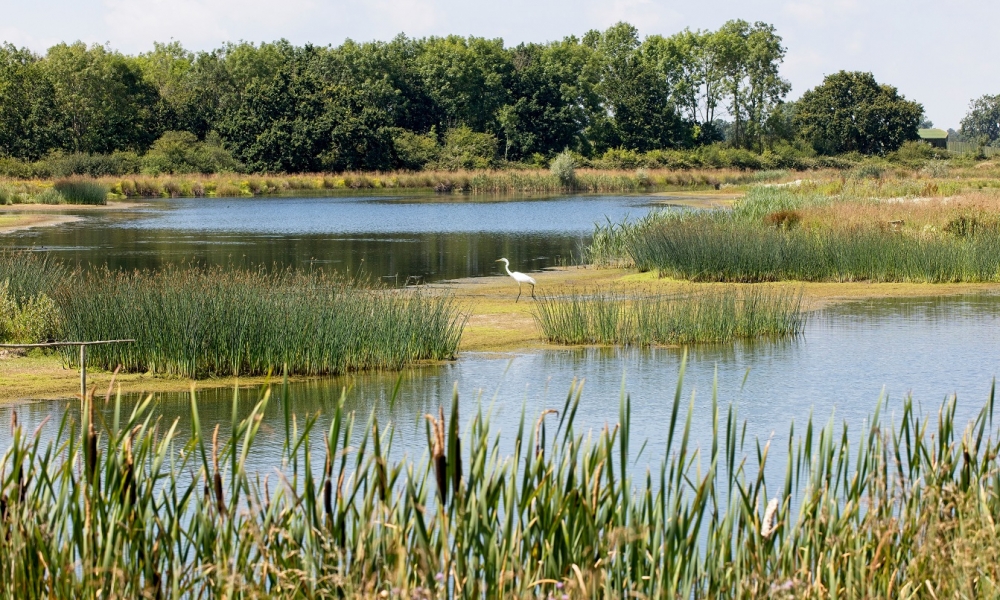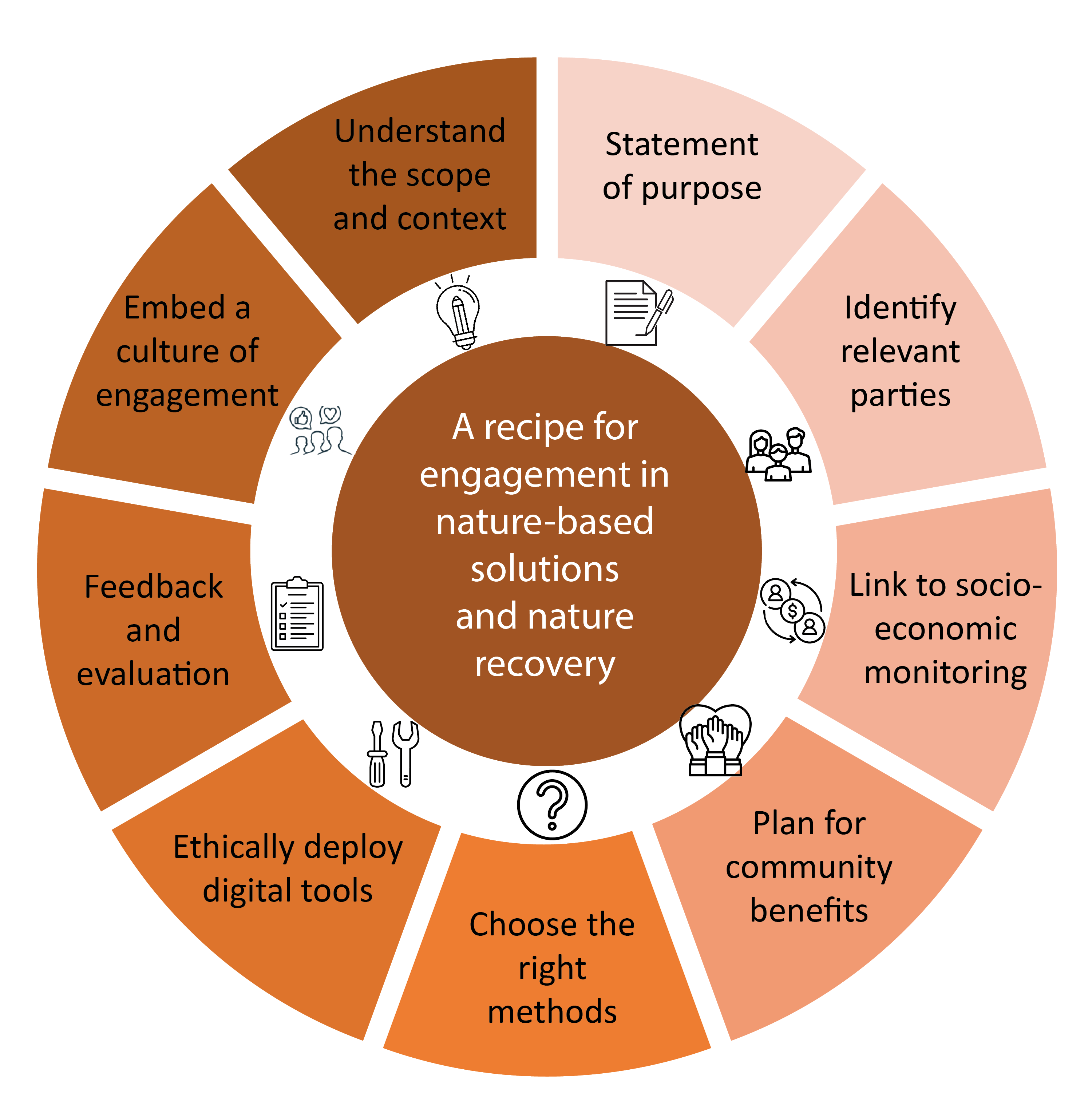How to Harness the Power of Engagement: a Recipe for Nature Recovery and Nature-based Solutions
Associated Sprints
Recent News
- Agile at the BES Symposium
- Youth-Led Research and Policy
- Greenhouse gas uncertainties: expanding the impact of research

Engagement is essential for fostering more collaborative, participatory and democratic solutions for tackling the world’s most pressing environmental challenges. It is a cornerstone for Nature Recovery (NR) and Nature-based Solutions (NbS), offering a pathway to delivering multiple, integrated benefits for people, nature and climate. It can be applied to diverse types of NR and NbS projects, including conservation, restoration, rewilding, urban greening, community gardening, sustainable forestry and agriculture. Engagement transcends communication and consultation; it is a dynamic force that, when harnessed effectively, can bring diverse groups and individuals together to deliver better and more inclusive environmental outcomes at scale.
The Agile Initiative and the Leverhulme Centre for Nature Recovery are pleased to launch the Recipe for Engagement (RfE), a new versatile guide designed to empower practitioners and decision-makers who aim to develop more inclusive, meaningful and impactful public and stakeholder engagement strategies. The RfE guidance is informed by empirical evidence and has been developed by researchers Caitlin Hafferty (Environmental Change Institute and the Nature-based Solutions Initiative), Mark Hirons (Environmental Change Institute), Emmanuel Selasi Tomude (UK Centre for Ecology and Hydrology), and Constance McDermott (Environmental Change Institute).
Find out what practitioners have to say about their experience using the RfE:
“It was really useful to learn from this flexible and adaptable process for our own engagement work. The guidance helped to form the foundation of our engagement strategy, the ‘Engagement Roadmap’, ensuring that it aligned with our mission and vision for rewilding and repeopling. It is great to see this practical yet comprehensive guidance now available to support others’ work, helping more organisations to effectively navigate and harness the engagement process to deliver more benefits for people and nature.”
Dr. Calum Brown, Chief Scientist, Highlands Rewilding
“I wanted to let you know how much I enjoyed reading the RfE. I found it refreshingly supportive instead of overwhelming. There were reminders of how to act when there are limitations on an organisation’s ability to deliver all ingredients and how to commit to continuous improvement. Thank you for sharing this and helping non-experts like me understand the engagement process much better. I’ve already changed the way that I’ve been thinking about and preparing for engagement after reading this.”
Nature Recovery Project Manager, Public Sector
Download the RfE here and the Executive Summary here.
The essence of engagement
Engagement is defined as a process by which individuals, groups and organisations choose to take an active role in decisions which affect them. It includes a range of ways to involve a range of stakeholders and relevant parties including farmers and land managers, non-governmental organisations, charities, businesses, investors, local authorities, government bodies, members of the public and local communities.
Introducing the Recipe for Engagement (RfE)
The RfE is not a rigid set of rules but a flexible and adaptable guide, offering a balance between process prescription and flexibility. It provides a framework that brings clarity and structure to the engagement process while allowing for creativity and adaptability to individual contexts. Tailored for practitioners and policymakers across various domains, including landowners, government bodies, scientists, community groups, and more, the RfE acts as a compass for those navigating the complexities of engagement.
Understanding the Key Ingredients of Engagement
The RfE underscores the importance of understanding the ‘What, Why, Who, How, and When’ of engagement, which includes what engagement is, why it is important, who to include, how to do it, and when. The RfE then introduces nine key ingredients for effective outcomes. From scoping the project’s context to fostering a culture of engagement within organisations, each ingredient plays a vital role in the overall success of engagement initiatives.
- Scope and Context: Consider local factors and stakeholders’ needs.
- Clear Purpose: Define key roles and manage expectations.
- Identify Relevant Parties: Include those with interest in or influence over a project.
- Link to Socio-economic Monitoring: Integrate social indicators and impact strategies.
- Plan for Community Benefits: Advocate for place-based approaches involving local communities.
- Choose Effective Methods: Align with project objectives and participant types.
- Inclusive Digital Approaches: Navigate digital divides and biases.
- Embrace Feedback and Evaluation: Continuously evaluate with clear feedback mechanisms.
- Embedding a Culture of Engagement: Institutionalise participatory values into governance.
Implementing the RfE
To implement the RfE, practitioners should first recognise the significance of engagement in NR and NbS projects (the What, Why, Who, How and When of engagement). Then, they can tailor the nine key ingredients to align with organisational priorities and project objectives. The value of the RfE lies in its versatility, offering adaptable components that can be tailored to diverse projects and decision-making scenarios. It is designed to complement existing engagement efforts, and can be integrated with other resources and guidance.
The RfE helps practitioners to select and use specific sections relevant to their needs, resources, and capacity. Whether you’re new to engagement or a seasoned professional, the guide offers a starting point for developing evidence-led strategies or enhancing existing processes.
Towards more inclusive and impactful engagement
In embracing the principles of the RfE, practitioners can embark on a journey towards fostering participatory decision-making processes that support flourishing landscapes, societal well-being, and resilient economies.
Download the RfE here.
The Recipe for Engagement is a living document, which means that it will be continuously updated and improved based on feedback and road testing in real-world scenarios. For any questions, please contact Dr Caitlin Hafferty: caitlin.hafferty@ouce.ox.ac.uk




